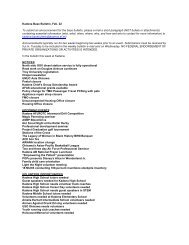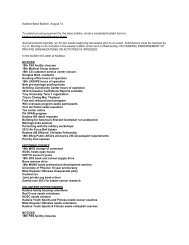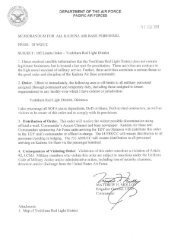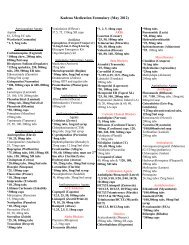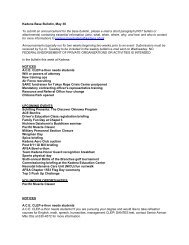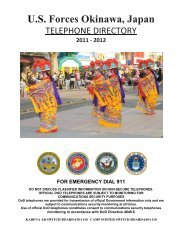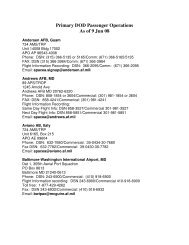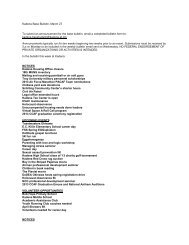JP 3-52, Joint Airspace Control - Defense Technical Information ...
JP 3-52, Joint Airspace Control - Defense Technical Information ...
JP 3-52, Joint Airspace Control - Defense Technical Information ...
You also want an ePaper? Increase the reach of your titles
YUMPU automatically turns print PDFs into web optimized ePapers that Google loves.
IntroductionAIRSPACE CONTROL COST, RISK, ANDEFFICIENCY CONTINUUM<strong>Airspace</strong> Continuum of <strong>Control</strong>Cost vs. Risk• System Efficiency• Resources, Cost• RiskUncontrolledStanding <strong>Airspace</strong>CoordinatingMeasures• Procedures• Common ReferenceProcedural<strong>Control</strong>• Communications• <strong>Control</strong>ler• Procedures• Common Reference• Some SurveillancePositive <strong>Control</strong>• Full Surveillance• Communications• <strong>Control</strong>ler• Procedures• Common ReferenceFigure I-3. <strong>Airspace</strong> <strong>Control</strong> Cost, Risk, and Efficiency Continuumsimplicity must be emphasized throughout to maximize the effectiveness of forcesoperating within the system. This flexibility must include the ability to incorporate acivil air traffic structure where no host nation (HN) capability exists.k. ACSs should be interoperable and integrated. Integrated ACSs are synergisticand more effective than the sum of their parts.l. <strong>Airspace</strong> control needs to support 24-hour operations in all weather andenvironmental conditions.m. Effective and safe operations in today’s complex airspace requireappropriate training for joint airspace users and joint ACS personnel. Core airspacetraining is primarily a Service component responsibility with theater-specific training asrequired. To provide a realistic training environment, ACS components (such as thetheater air control system and ATC) should be exercised as an overall system rather thanI-7



